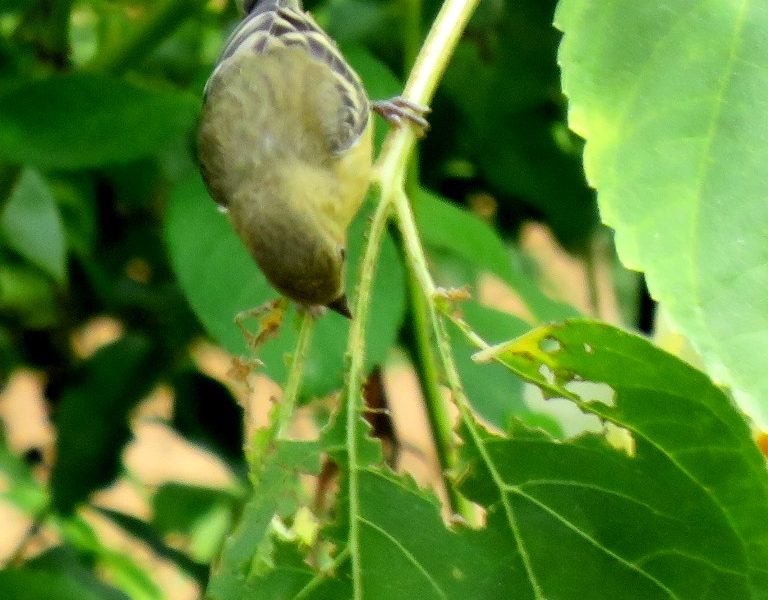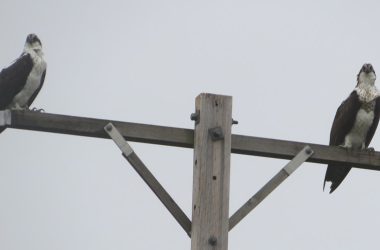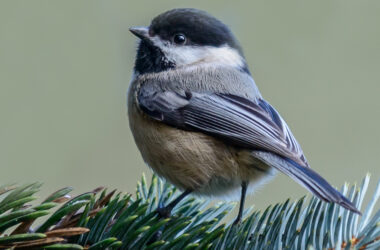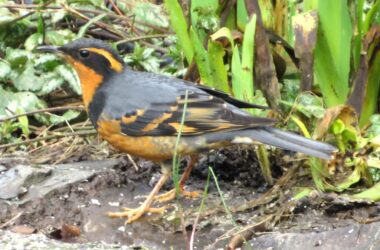The goldfinches have launched their annual sunflower filagree program. If you grow sunflowers in a goldfinch habitat, they will wait until the seeds are well set, until the plant stops growing taller, until days are much shorter than in June. Then, and only then, the goldfinches begin eating the green leaves, leaving the largest veins intact.
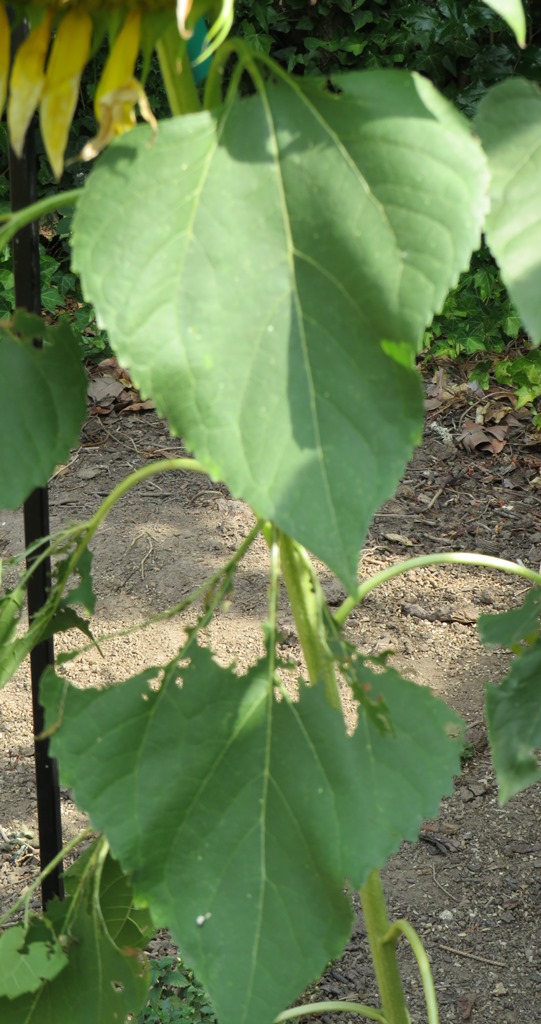
In the image above, you can see two large leaves on the same sunflower plant. One has been chosen for filagree, the other largely ignored. I observe similar differences between neighboring plants. I cannot determine if the finches’ dietary selections are random or linked to leaf qualities. Flavor? Maturity? Texture?
Who’s doing this filagree work? In our south Salem garden it’s the lesser goldfinch, smaller than its cousin, the American goldfinch. About half the size of the abundant reddish-brown house finch. It’s molting season so here’s what they look like now:
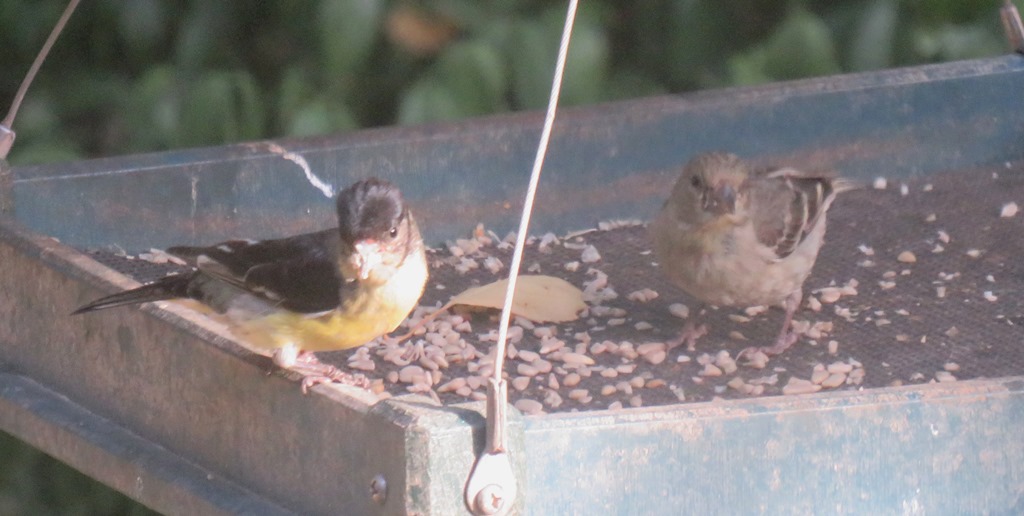
The mature lesser goldfinch weighs about a third of an ounce. That means each is less than half the weight of a house finch, less than one-eighth as heavy as the robin on the lawn. These seed-loving birds do not migrate. In winter, flocks of ten to a few dozen will move around the Salem area. You will not find them in dense forest, parking lots, or mowed fields. Often in late summer they gather where thistles and other plants are releasing mature seeds.
Each lesser goldfinch has a wingspan of about 8 inches. Its body length is about 4.5 inches. That’s a full half-inch greater than that Anna’s hummingbird you may see buzzing about a garden or park. In the avian world, little things matter.
Some bird experts believe that the minerals and vitamins in sunflowers are necessary for the birds during breeding and growth periods. The finches have been eating sunflower seeds year round. Sunflower leaves contain Vitamin E and selenium, which act as antioxidants.
A scientific article explains the sunflower is prominent in folk medicine: “It is used in ethnomedicine for treating a number of disease conditions which include heart disease, bronchial, laryngeal and pulmonary affections, coughs and colds and in whooping cough.” Maybe the goldfinches know something.
The article then lists an impressive list of organic compounds that sunflowers produce: phenol, terpene compounds, carbohydrates, flavanoids, flavonoids, tannins, alkaloids, saponins, steroids.
Other garden sources for the “salad eaters” are Jerusalem artichokes, kale, and lettuce that has gone to seed as well as seeds and tender buds of native plants.
Sometimes the eaten sunflower leaves are described as “skeletonized leaves” or “shredded leaves with angular holes.” I’d say “filagree” is a better choice.
For information about upcoming Salem Audubon programs and activities, see www.salemaudubon.org, or Salem Audubon’s Facebook page.
Harry Fuller is an Oregon birder and natural history author of “Freeway Birding” and the newly-published “Birding Harney County.” He is a member of the Salem Audubon Society. Contact him at [email protected] or atowhee.blog. His “Some Fascinating Things About Birds” column appears regularly in Salem Reporter.
SUPPORT OUR WORK – We depend on subscribers for resources to report on Salem with care and depth, fairness and accuracy. Subscribe today to get our daily newsletters and more. Click I want to subscribe!
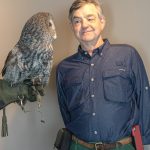
Harry Fuller is an Oregon birder and natural history author of three books: “Freeway Birding,” "Great Gray Owls of California, Oregon and Washington," and "San Francisco's Natural History--Sand Dunes to Streetcars." He leads birding trips for the Malheur Field Station. He is a member of the Salem Audubon Society, and leads bird trips locally. Harry has just published a new book, BIrding Harney County.

